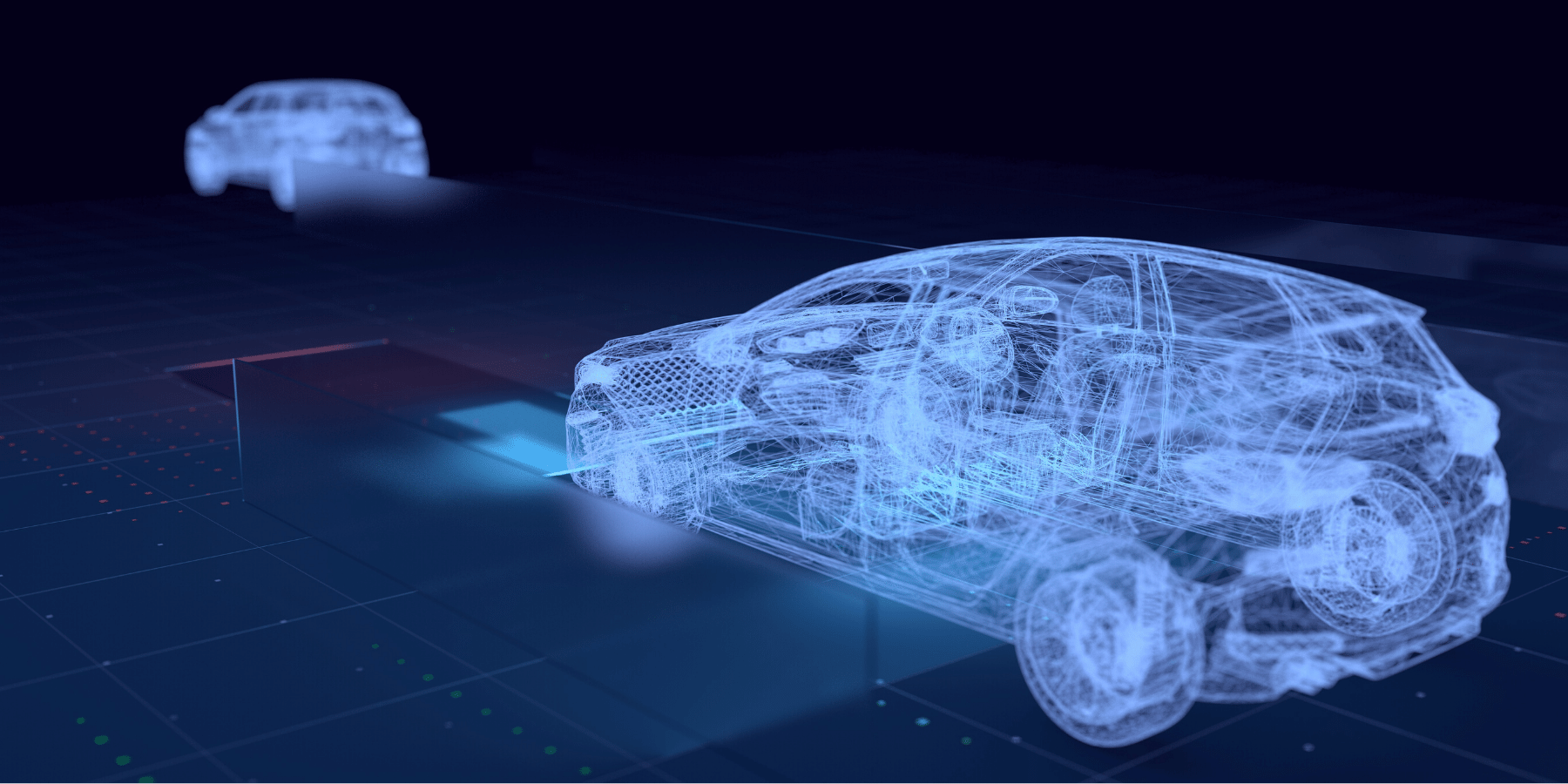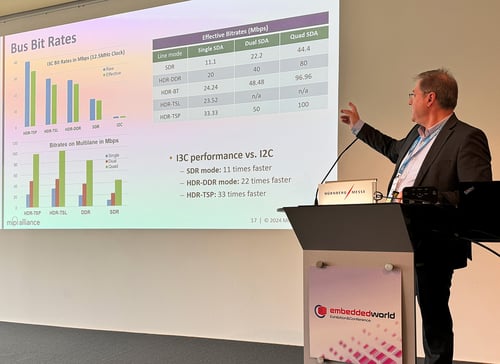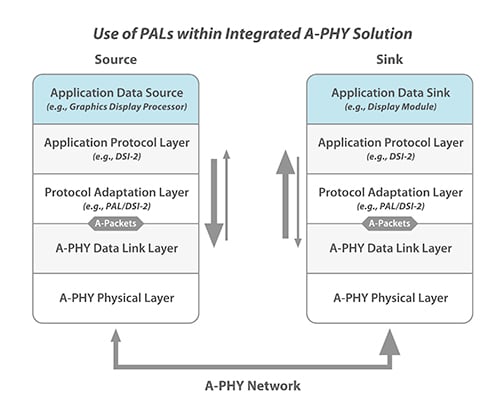MIPI A-PHY PALs
MIPI A-PHY Protocol Adaptation Layers

Developed by: A-PHY Working Group, Display Working group, camera working group
Connect existing upper-layer protocols over MIPI A-PHY® interface for long-reach SerDes connectivity solutions
Quick Facts
-
Key Highlights
- Define flows and mechanisms for higher-layer MIPI and approved third-party protocols to be carried across MIPI A-PHY
- Allow automotive designers to leverage existing de facto higher-layer protocols for connecting in-vehicle cameras, displays and other components
- Part of MIPI Automotive SerDes Solutions (MASS) that support advanced driver assistance systems (ADAS), autonomous driving systems (ADS), in-vehicle infotainment (IVI) and other surround-sensor applications
- Simplify in-vehicle networks and reduce costs and development time for automotive original equipment manufacturers (OEMs) and system integrators
- Allow integration of future protocol innovations using a standardized connectivity framework
-
Fundamental Features
- Map higher-layer protocols to MIPI A-PHY’s A-Packet format for transmission and reception over long reach A-PHY SerDes interfaces
- Robust family of MIPI PAL specifications developed for most common in-vehicle protocols
- Help enable end-to-end interoperable SerDes solutions
-
Use Cases
- Advanced driver assistance systems (ADAS)
- Autonomous driving systems (ADS)
- In-vehicle infotainment (IVI)
Get the Specifications
-
Current Versions
MIPI PAL™/CSI-2® v1.1 (November 2022) Member version

MIPI PAL™/DSI-2™ v1.1 (June 2025) Member version

MIPI PAL™/eDP-DP v1.1 (June 2025) Member version

MIPI PAL™/ETH v1.0 (March 2022) Member version

MIPI PAL™/GPIO v1.1 (September 2024) Member version

MIPI PAL™/I2C v1.1 (July 2024) Member version
MIPI PAL™/SPI v1.0 (April 2023) Member version

-
Previous Versions
All PAL versions are available to MIPI members on the member website (Causeway).
Overview
General Info
-
Overview
MIPI Protocol Adaptation Layer (PAL) specifications define the flows and mechanisms for various widely adopted higher-layer protocols to be carried across the MIPI A-PHY long-reach serializer-deserializer (SerDes) physical layer interface for automotive applications. MIPI PALs define the adaptations necessary to carry proven MIPI and approved third-party protocols over a MIPI A-PHY link to connect cameras and displays to their associated electronic control units (ECUs).
The MIPI PALs map those approved higher-layer protocols to MIPI A-PHY's A-Packet format, acting as a conduit to and from A-PHY’s generic data link layer. In this way, the PALs enable the higher-layer protocols to operate seamlessly over MIPI A-PHY physical links.
MIPI PALs are available to MIPI Alliance members. For information about becoming a member, see Join MIPI.
-
MIPI Protocol Adaptation Layers
MIPI is developing multiple PAL specifications to simplify the integration of A-PHY to a variety of upper-layer protocols.
PALs are now available for I²C (Inter-Integrated Circuit), GPIO (General Purpose Input/Output), MIPI Camera Serial Interface (CSI-2®), MIPI Display Serial Interface (DSI-2℠), SPI (Serial Peripheral Interface) and the Video Electronics Standards Association (VESA®) Embedded DisplayPort and DisplayPort™ standards.
A PAL for carrying up to 100Mbps Ethernet traffic over an A-PHY v1.1 network for command and control of peripherals was released in 2022.
Current PALs:
- MIPI PAL™/CSI-2®
- MIPI PAL™/DSI-2™
- MIPI PAL™/eDP-DP
- MIPI PAL™/ETH
- MIPI PAL™/GPIO
- MIPI PAL™/I²C
- MIPI PAL™/SPI
-
Diagrams & Tables







